Introduction
In the past centuries, Milan used to be perceived as a water-city, with an economy propelled by canals that extended throughout it. However, as the city evolved, those waterways were gradually buried beneath roads, and the aquatic arteries that once defined Milan are now relegated to the periphery of the urban fabric. This covering of the waterways in Milan, along with the expansion of impervious surfaces has awakened challenges like floods, pollution and water security.
In order to address these environmental and urban challenges, the project Arteries of Lombardy focuses on enhancing Milan’s water systems through sustainable and innovative water management strategies. It’s built on the understanding of the vital role of water in urban ecosystems, particularly in the context of climate change and urbanization.
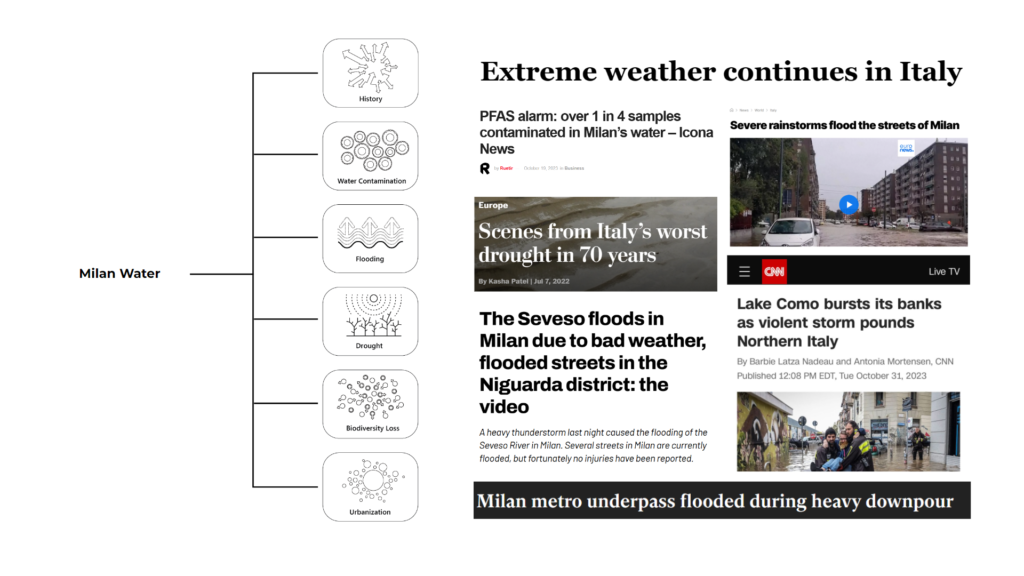
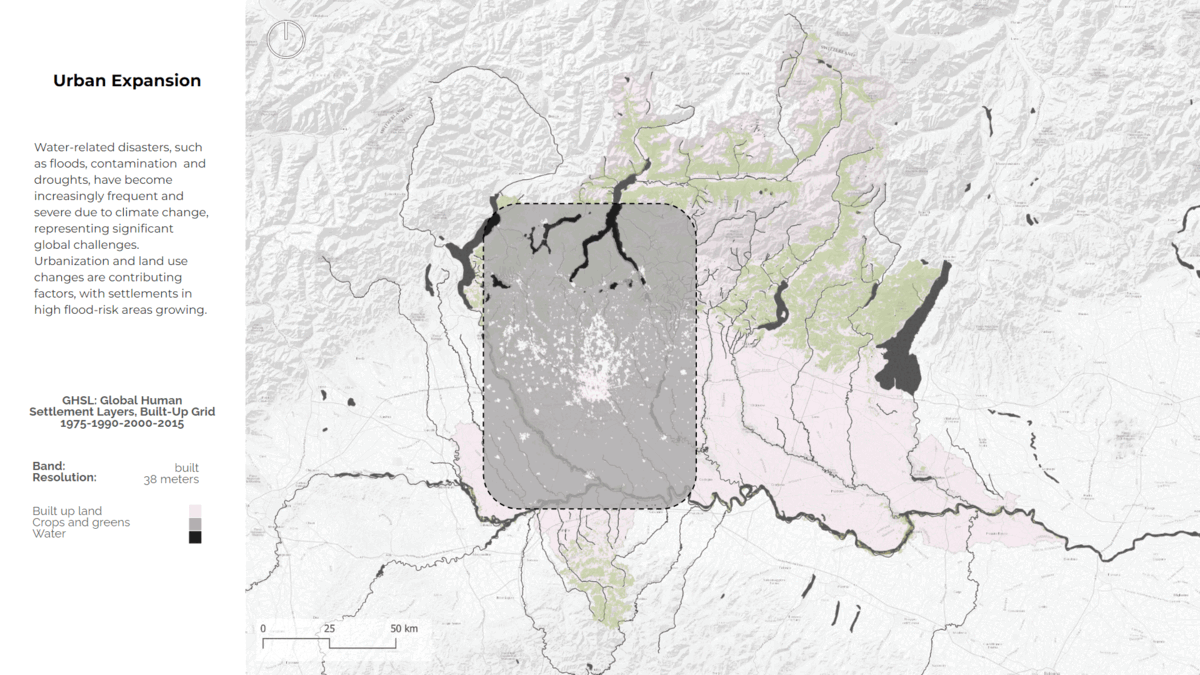
Context
Milan is intricately woven into the hydrological tapestry of three key basins: Lambro, Olona, and Seveso. These basins not only define the geographical landscape of the region but also play a pivotal role in shaping Milan’s water dynamics. The Lambro River, originating in the Alps, meanders through the Lombardy region, contributing to the fertile plains that sustain agriculture. The Olona River, with its origins in the pre-Alpine zone, and the Seveso River, flowing from the Brianza hills, further contribute to the mosaic of water networks that crisscross Milan.
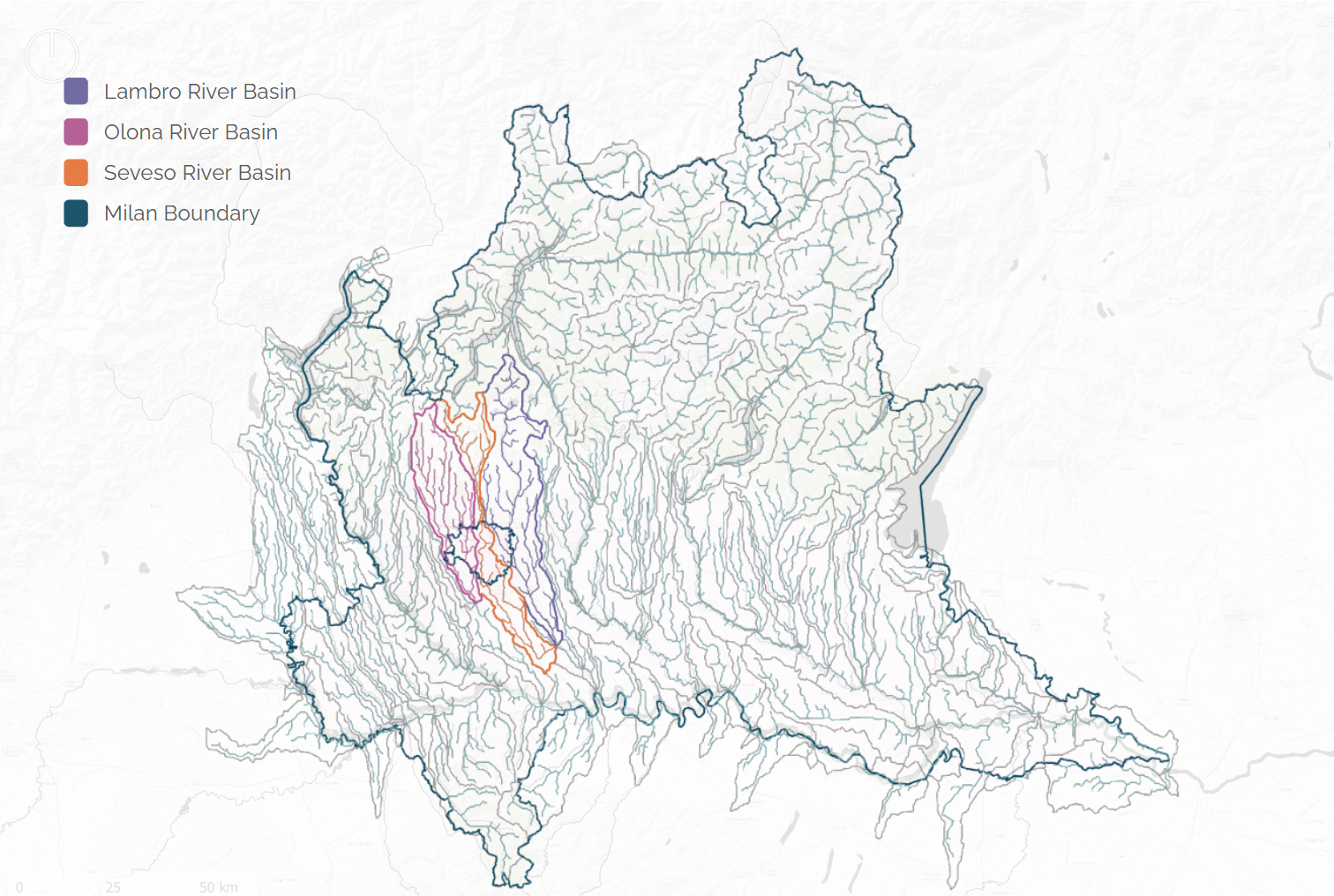
Collectively, the Lambro, Olona, and Seveso basins converge to form an integral part of the larger Po River basin, the most significant waterway in the Lombardy region. The Po River, a vital artery, binds these tributaries together, coursing through the northern Italian landscape. The intricate interplay of these water networks sustains not only Milan but also the broader agricultural and ecological vitality of Lombardy.

However, this intricate network of waterways faces significant challenges. The city’s rapid urbanization and industrial activities have led to increased pollution in these vital water arteries. As the Lambro, Olona, and Seveso rivers converge into the Po River within the Lombardy region, they carry with them the burden of pollutants accumulated along their journey. Urban runoff, industrial discharges, and other contaminants pose threats to water quality, affecting not only the aquatic ecosystems but also impacting the agricultural lands downstream.
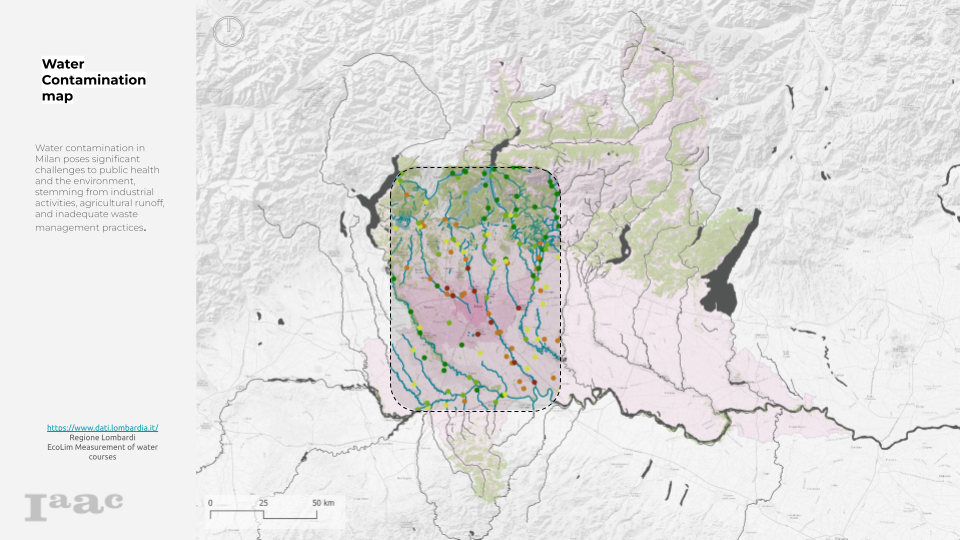
It is noteworthy that a significant portion of the land within the Lambro, Olona, and Seveso basins is dedicated to agriculture. The fertile plains shaped by these rivers have long been the lifeblood of Lombardy’s agricultural sector, with vast expanses utilized for cultivating crops that contribute to the region’s economic prosperity.
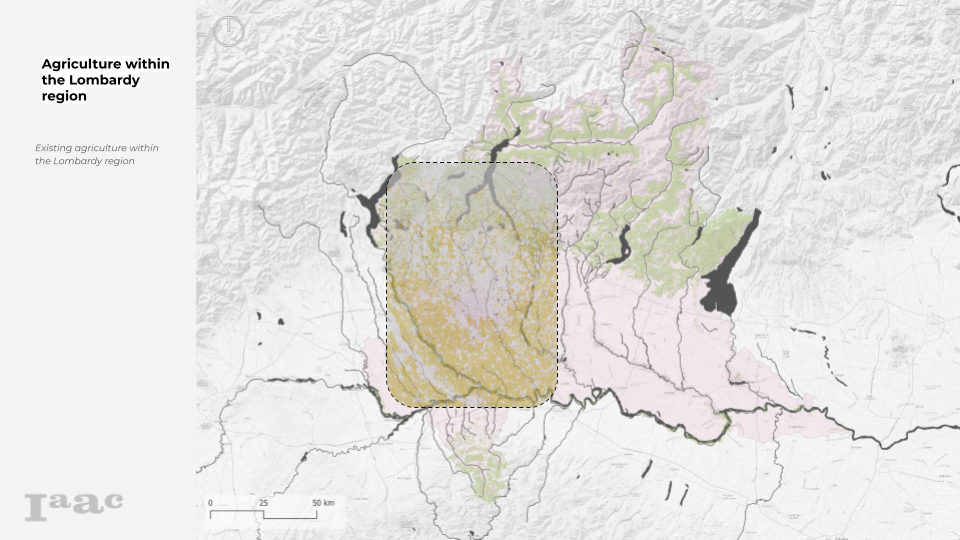
Nevertheless, the predominant agricultural land use and the presence of dry or unused areas in the Lambro, Olona, and Seveso basins pose a dual challenge. The extensive cultivation of crops, combined with patches of dry land, restricts the natural absorption of water, leading to heightened runoff during periods of heavy rainfall. This increased runoff, exacerbated by impermeable surfaces associated with urbanization, contributes to elevated flood risks within the region.
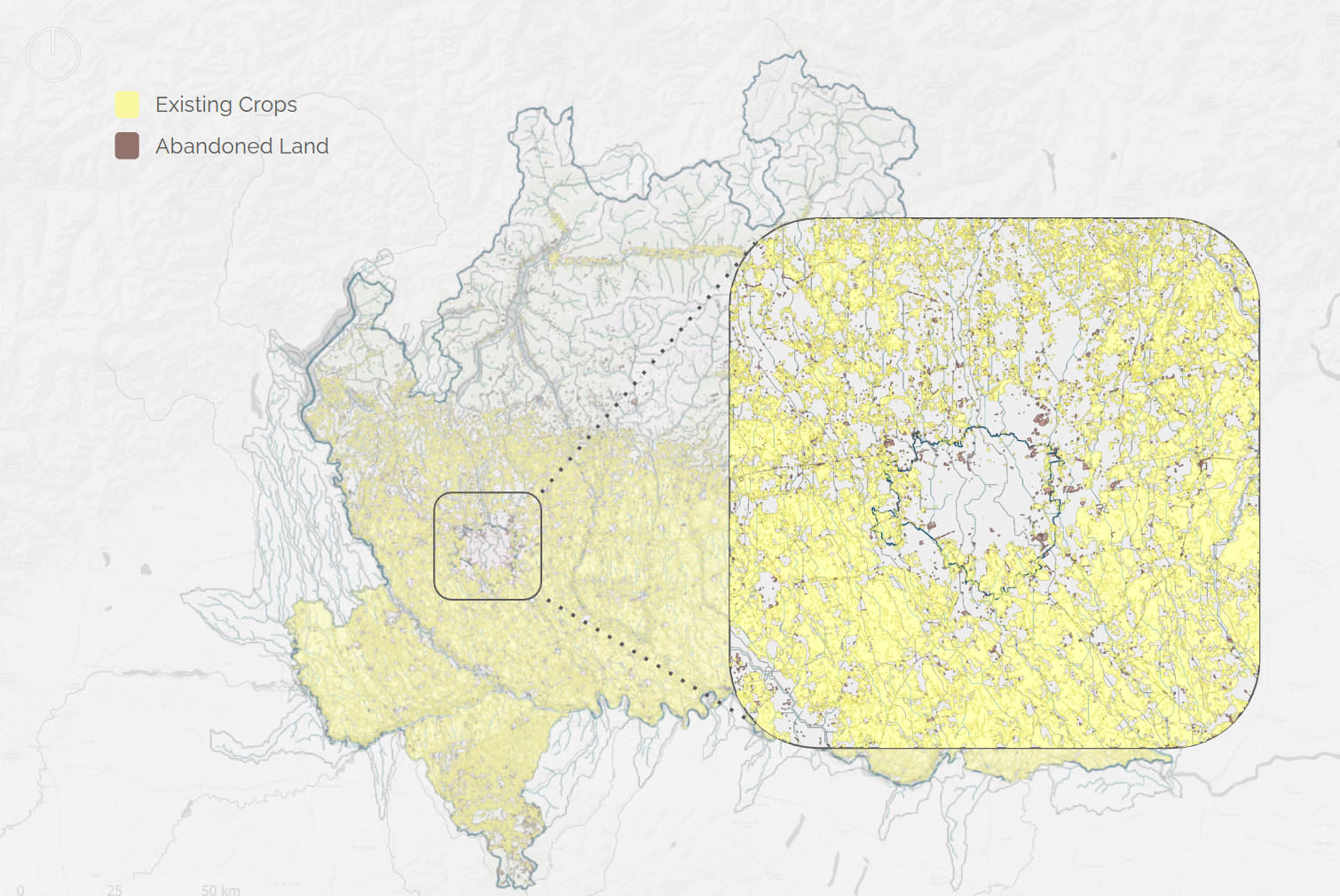
In navigating the delicate balance between agriculture, land use, and water management in the Lambro, Olona, and Seveso basins, it is imperative to acknowledge the growing evidence of increased flood occurrences over time.
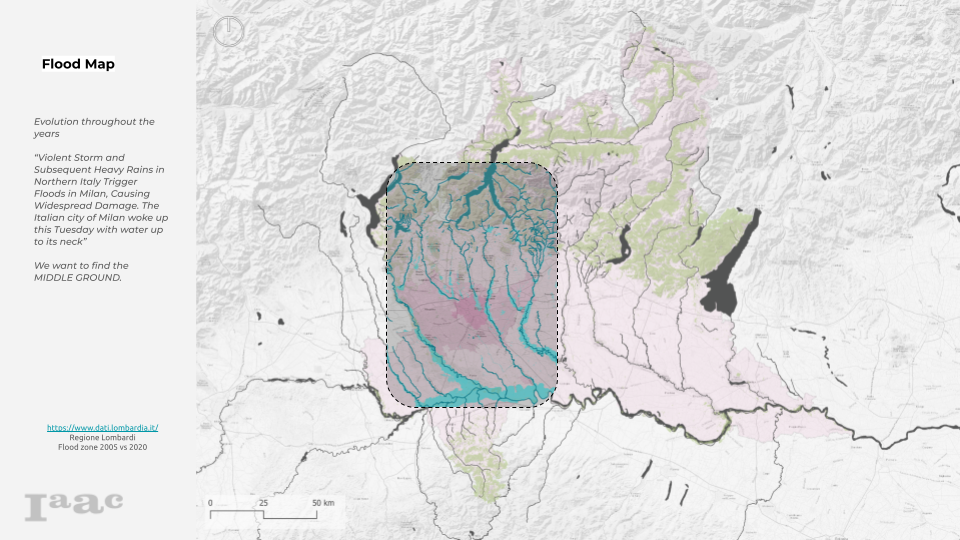
In conclusion, the intricate relationship between agriculture, urbanization, and water dynamics in the Lambro, Olona, and Seveso basins needs a comprehensive approach. In navigating the evolving challenges of climate change and human influence, our vision is not just to mitigate immediate flood risks but to foster a resilient equilibrium between urban development, agriculture, and the natural water systems that define Lombardy’s landscape.
Methodology
Our project adopts a multi-scalar methodology, recognizing that the challenges in Milan’s water systems transcend municipal boundaries and need a comprehensive approach. Operating at the provincial, regional, and municipal levels, our strategy unfolds in a three-part framework: Prevention, Adaptation, and Deculverting.
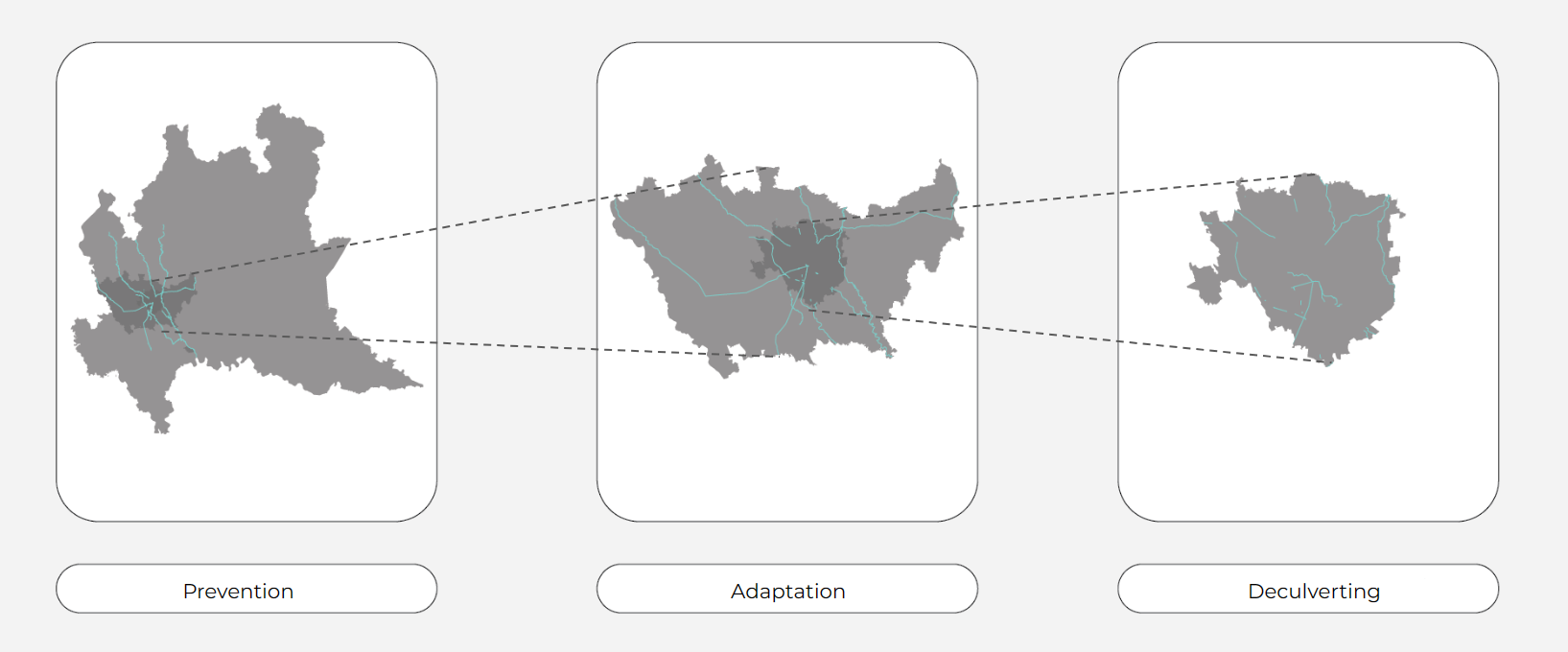
At the provincial scale, we engage with the different typologies of land use in the Olona, Seveso and Lambro rivers basins, proposing agroforestry practices in order to prevent the amount of runoff that flows into the streams. Regionally, we identify the places where there’s opportunity for adaptation and connection between the green and blue spaces and aim to make room for the river. Finally, on a local scale, we identify the most beneficial canals to deculvert within the urban fabric to foster connection and bring back water to the city landscape.
Vision
Our project envisions transforming Milan’s water management by integrating nature-based designs into urban planning. This involves addressing rapid urbanization, biodiversity loss, and inefficient water management to reinforce Milan’s connection with nature and climate adaptation strategies.

Methodology 1: Prevention
Natural Flood Management (NFM) is an approach to mitigating the impact of floods by utilizing or restoring natural features and processes within a watershed. Instead of relying solely on traditional engineering solutions like dams and levees, NFM seeks to work with nature to manage and reduce the risk of flooding.
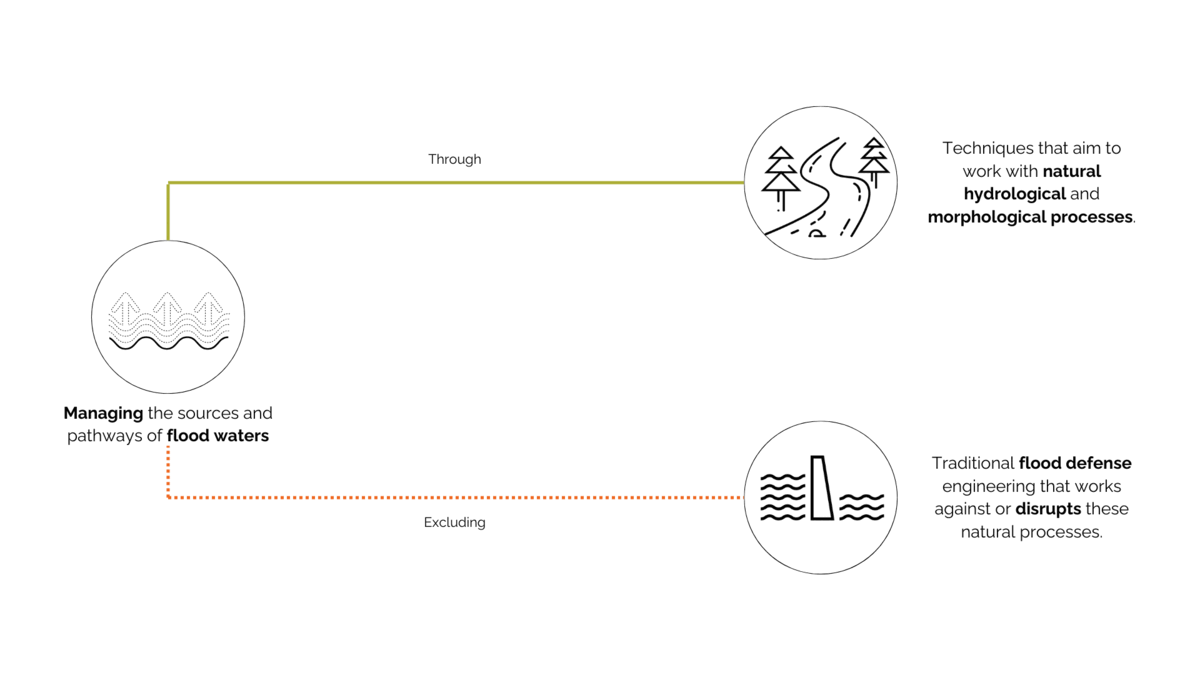
By embracing Natural Flood Management strategies, communities aim to enhance resilience to flooding while simultaneously benefiting ecosystems, water quality, and biodiversity. This approach emphasizes the importance of harmonizing human activities with natural processes to create more sustainable and resilient landscapes.
From considering both the region’s hydrological dynamics and predominant agricultural land use, the strategic choice of agroforestry as the best context-based approach was made. By integrating trees within existing agricultural landscapes, we aim to harness the dual benefits of enhanced water management and sustainable farming practices. The tree canopy acts as a natural barrier and the presence of roots improve the soil absorption capacities, reducing runoff and preventing soil erosion, thereby mitigating the risk of floods downstream. Simultaneously, agroforestry fosters biodiversity, supports ecosystem services, and contributes to climate change mitigation through carbon sequestration.
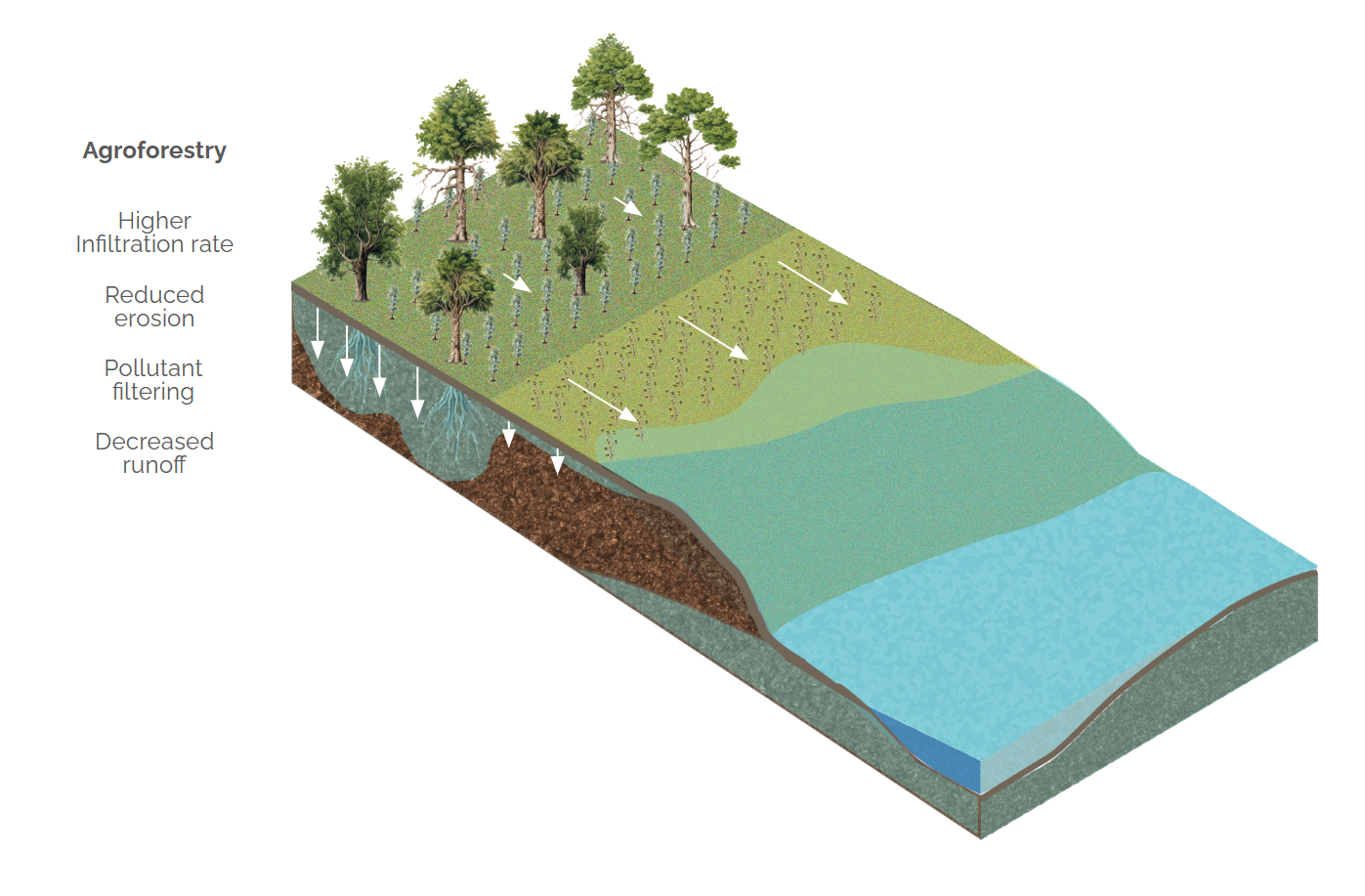
Tree Selection: Recognizing the diversity of crops prevalent in the Lombardy region, we meticulously studied existing agroforestry practices tailored to the main types of identified crops. This research involved a selection of species that thrive in similar weather conditions, ensuring a harmonious integration into the local agricultural landscape.
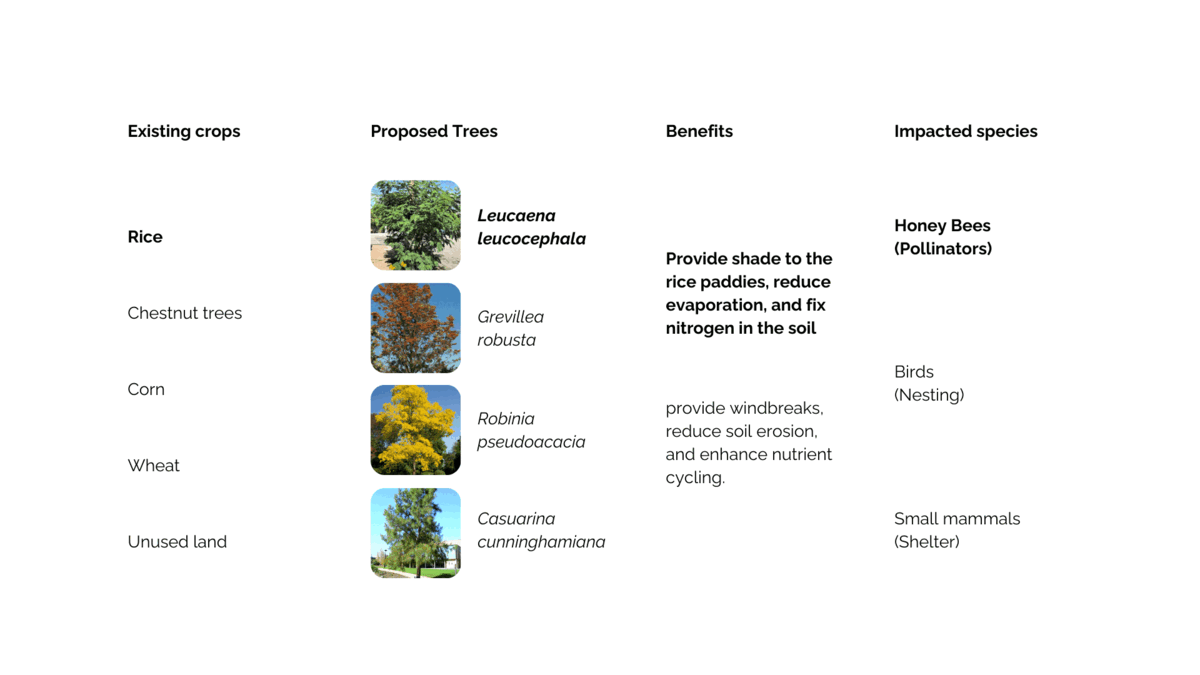
Methodology 2: Adaptation
In the adaptation section of the project, we are employing a focused case study of the Lambro River as a model for our revitalization and ecological enhancement efforts. Starting off in the north, we are implementing agroforestry practices to address ecological fragmentation, enhancing the connectivity and integrity of natural habitats along the river. This approach not only supports biodiversity but also enriches the agricultural landscape, creating a symbiotic relationship between farming practices and ecosystem health.
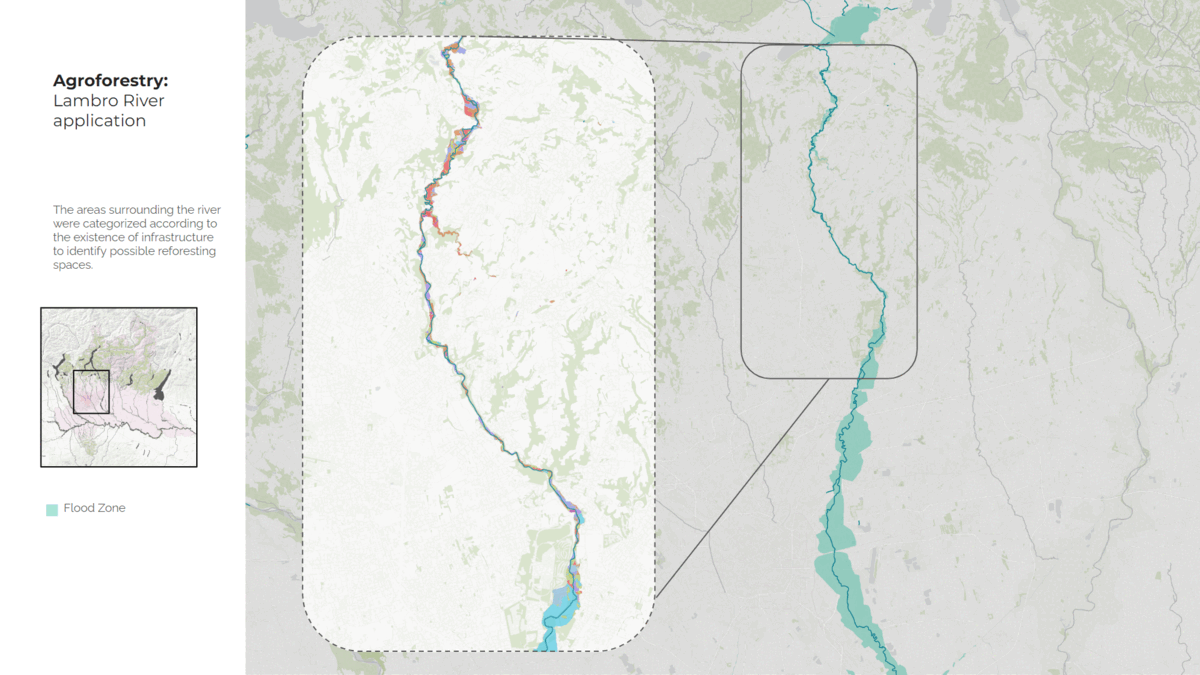
As the Lambro River flows into the urban areas of Milan, our approach becomes more nuanced and detailed. We have categorized the surrounding land uses into four distinct categories, each with its own set of tailored interventions. This classification allows for targeted strategies that respect and enhance the unique characteristics of each area, whether residential, commercial, industrial, or green space. For each category, specific interventions are designed to optimize water management, increase green infrastructure, and improve public spaces, ensuring that the entire course of the river contributes to a healthier, more resilient Milan. This systematic yet flexible strategy showcases our commitment to a holistic and adaptive urban water management plan.
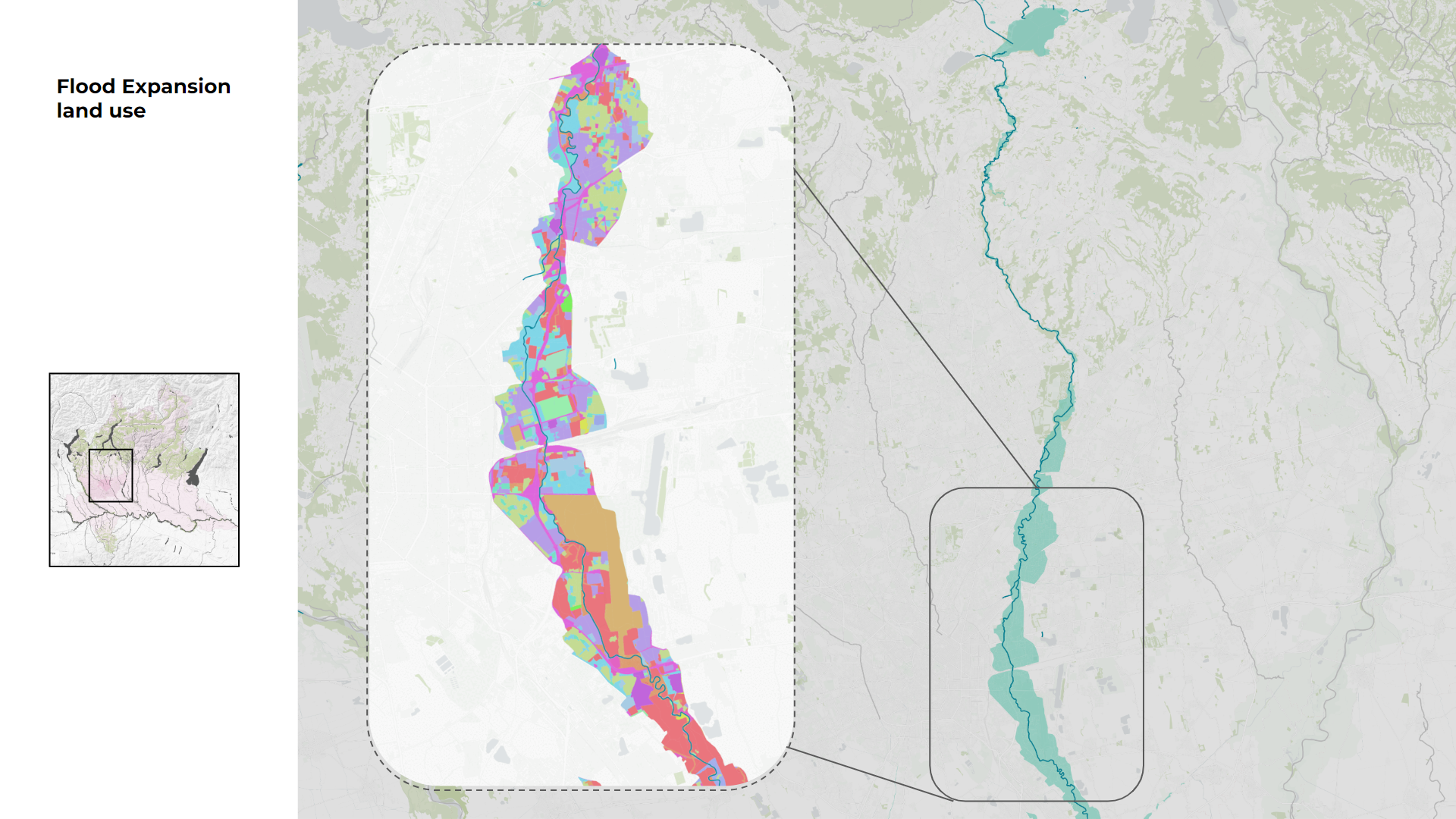
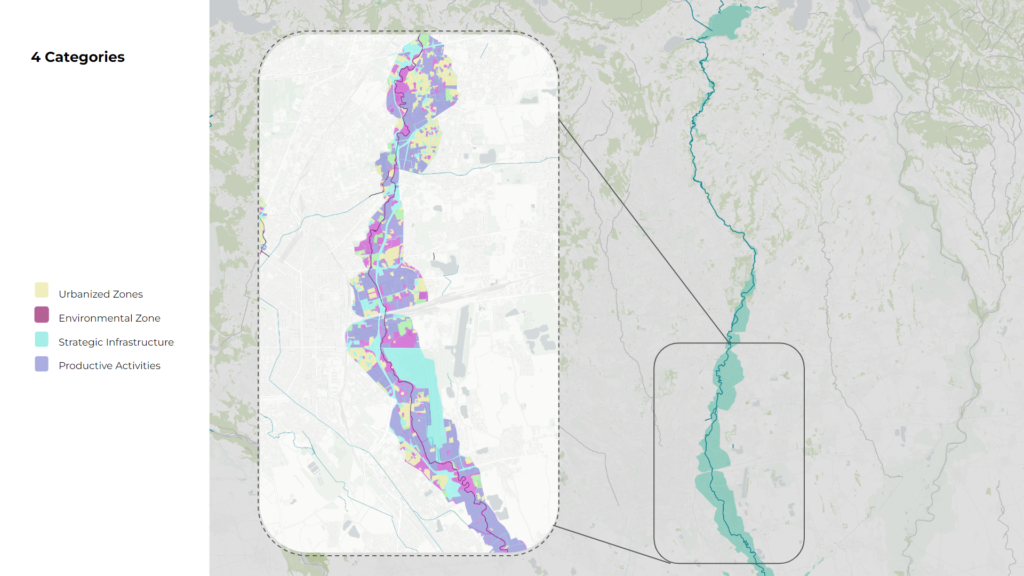
Utilizing tools like Circuitscape, we’ve pinpointed key areas along the Lambro River with weak ecological connections, primarily influenced by the location and arrangement of crops and urban structures. Our targeted efforts in these crucial zones are designed to bolster the river’s ecological corridors, enhancing habitat connectivity and promoting a diversity of species. This data-driven approach ensures that our restoration efforts are precise and impactful, leading to a sustainable, thriving natural environment within Milan, harmoniously integrated with the city’s urban fabric
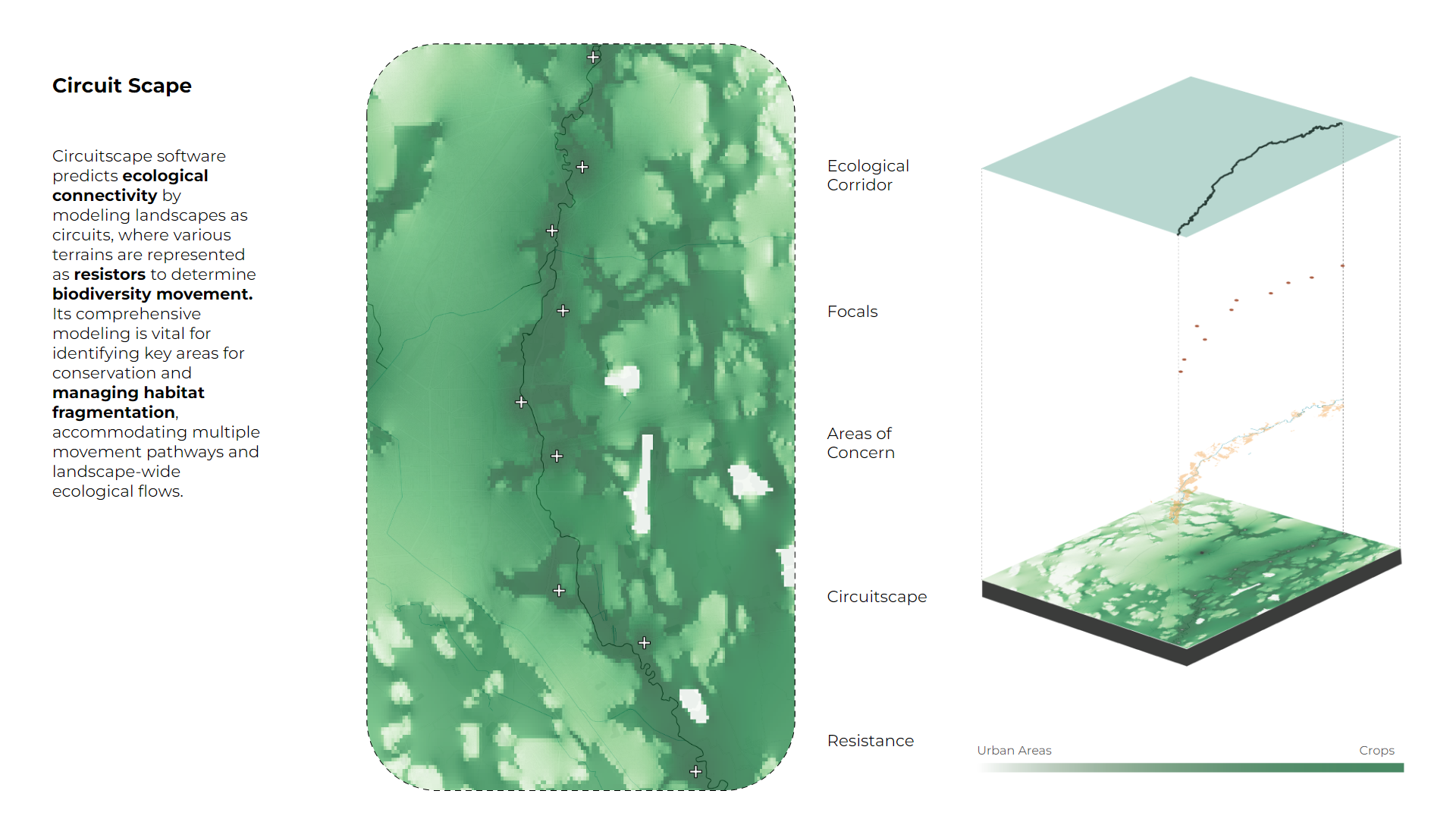
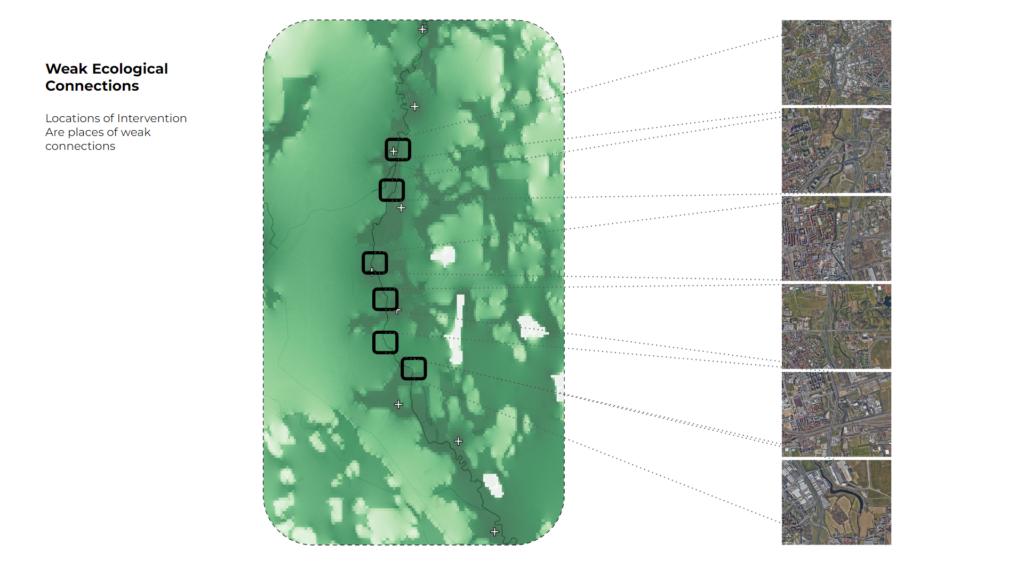
In the ambitious project to rejuvenate Milan’s Lambro River, we are employing a holistic and scientific approach to restore ecological vitality and enhance urban water management. Initiatives like meander restoration and levee setbacks are being strategically implemented to reestablish the river’s natural flow and expand its floodplain, thereby increasing biodiversity and reducing flood risks. These interventions are focused on areas identified through extensive analysis of ecological connectivity and land use, particularly where urban development has fragmented habitats. By reintroducing natural dynamics to the river, we aim to create a more resilient and biodiverse urban landscape.

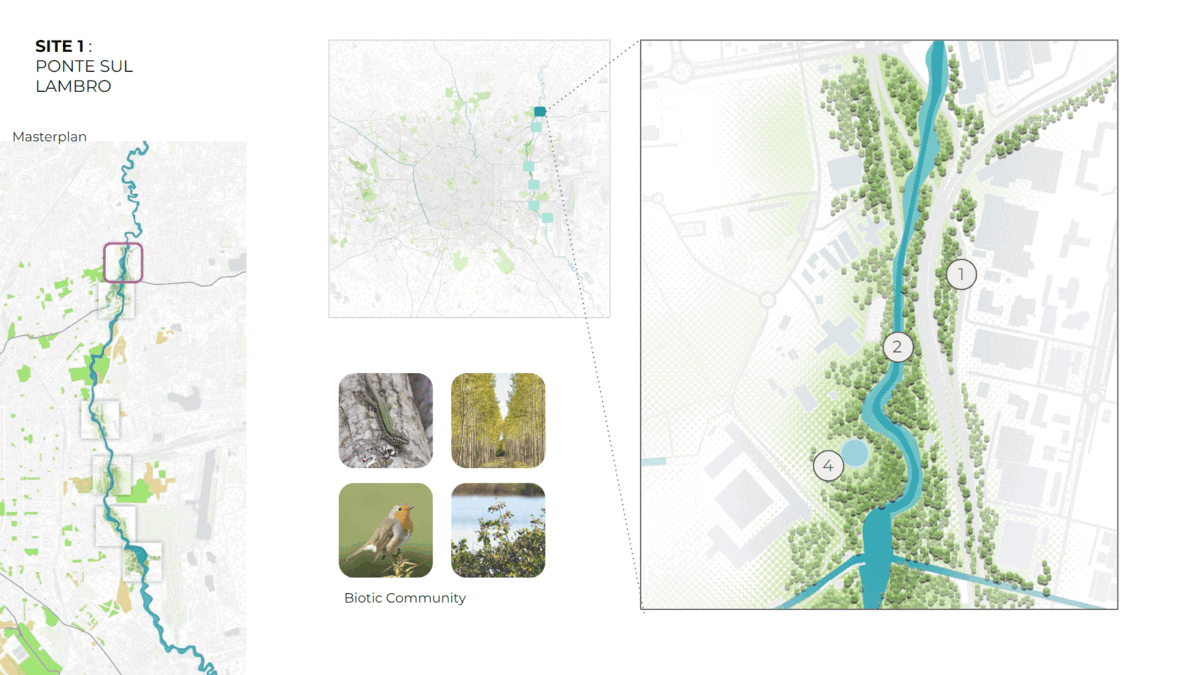
Methodology 3: De-culverting
Milan’s project to deculvert tunneled rivers aims to revitalize the city by reintroducing historic waterways, creating multifunctional urban spaces that prioritize nature, people, and water.
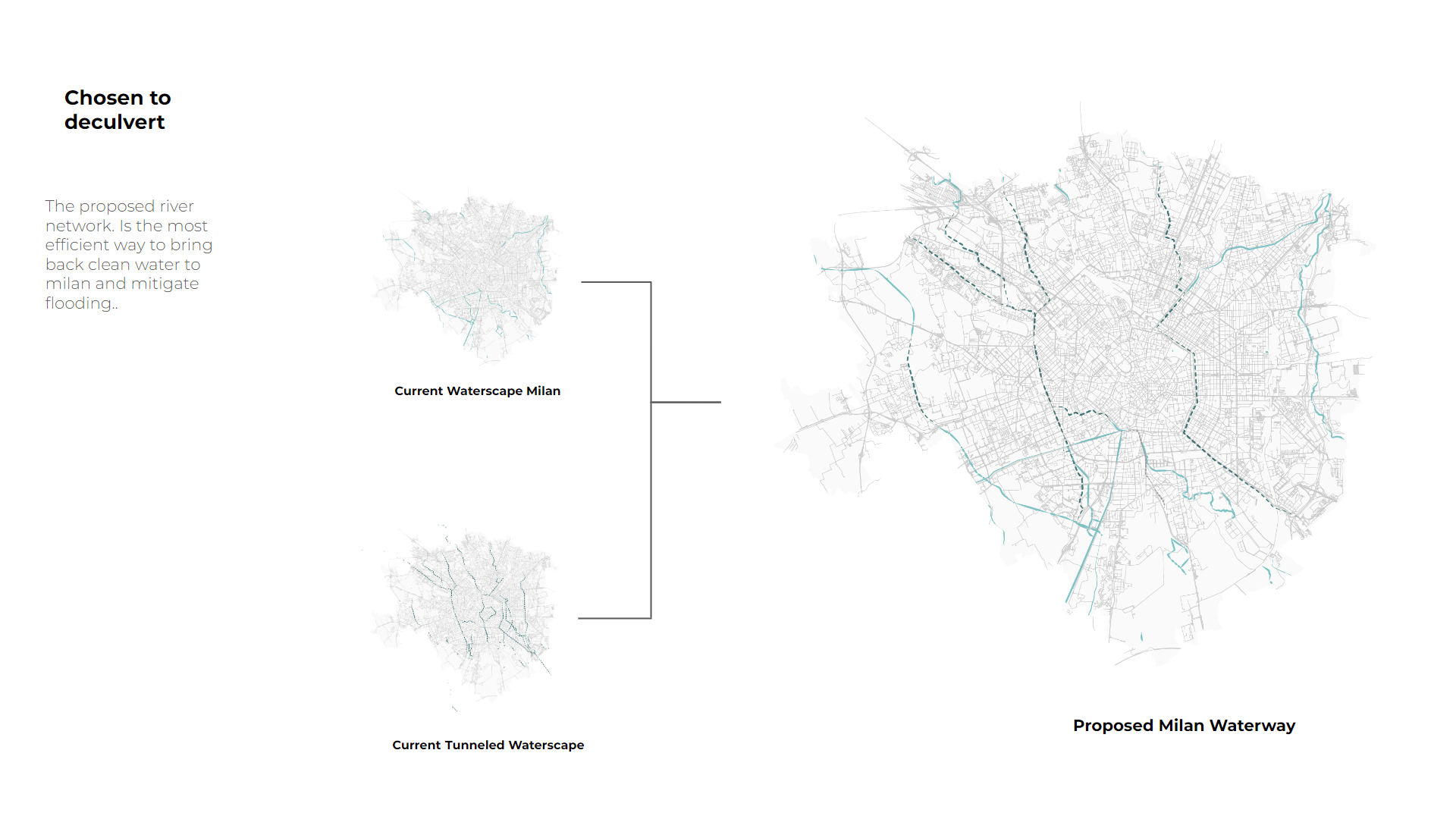
This approach not only enhances urban biodiversity and ecological connectivity but also improves flood management through naturalized channels and underground reservoirs. By reworking road sections to include more green spaces, pedestrian paths, and cycling lanes, the initiative seeks to transform Milan into a more resilient, sustainable, and livable city, balancing urban development with environmental stewardship and community well-being.
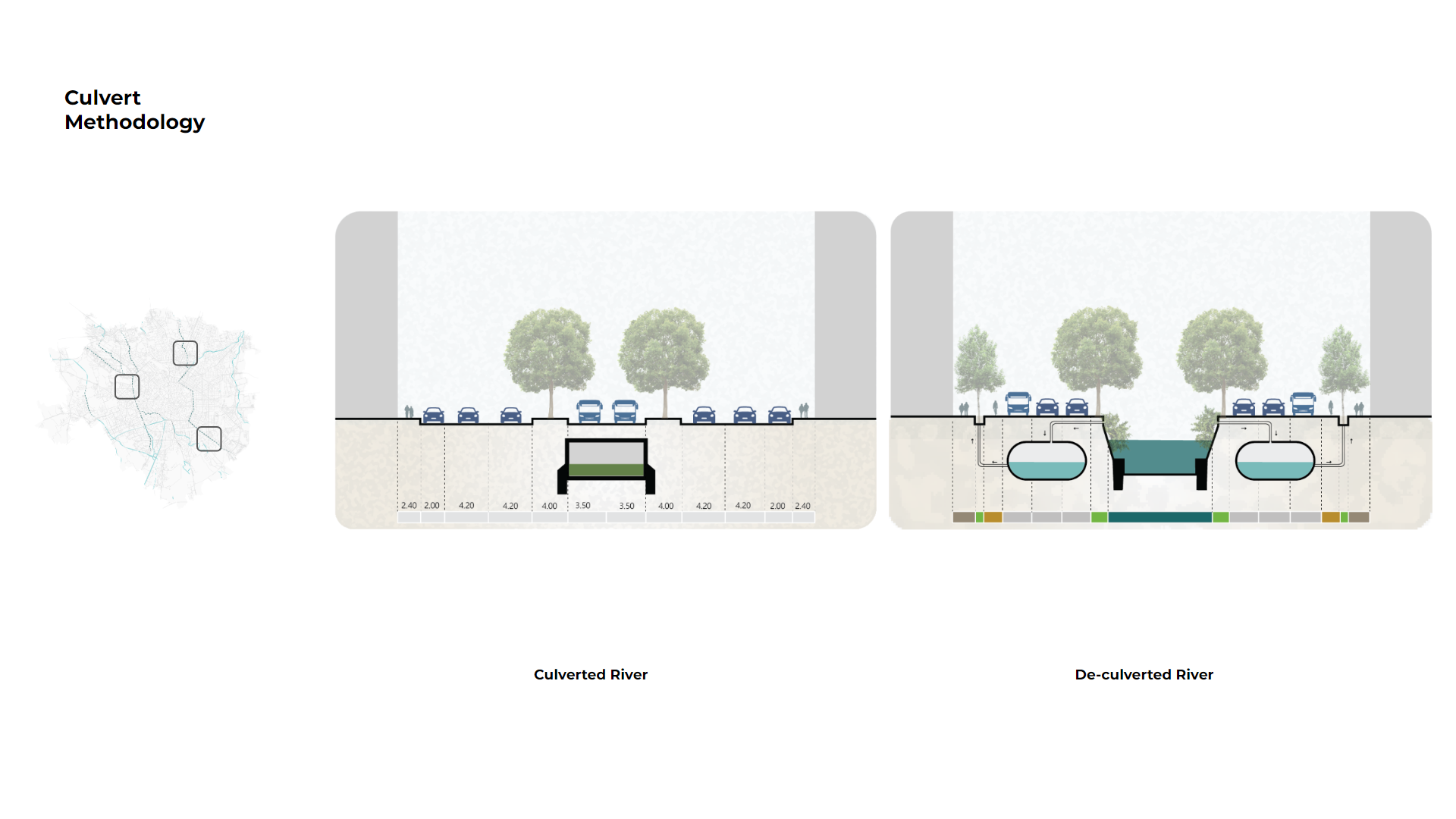
Conclusion
Our project is just one example of the transformative power of holistic water management strategies in the context of Milan’s evolving urban and environmental landscape. Through a multidimension study of the city’s historical water systems, accompanied with a deep understanding of the challenges posed by climate change and urbanization, we have charted a course toward revitalizing Milan as a water-centric city. The multi-scalar methodology, addressing provincial, regional, and municipal dimensions, accentuates the fact that effective water management transcends administrative boundaries and that it is possible to implement nature-based solutions in today’s world.


